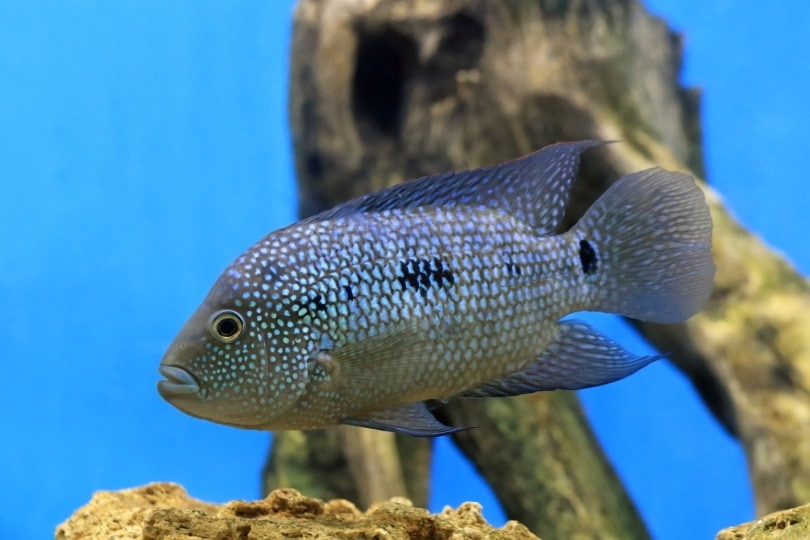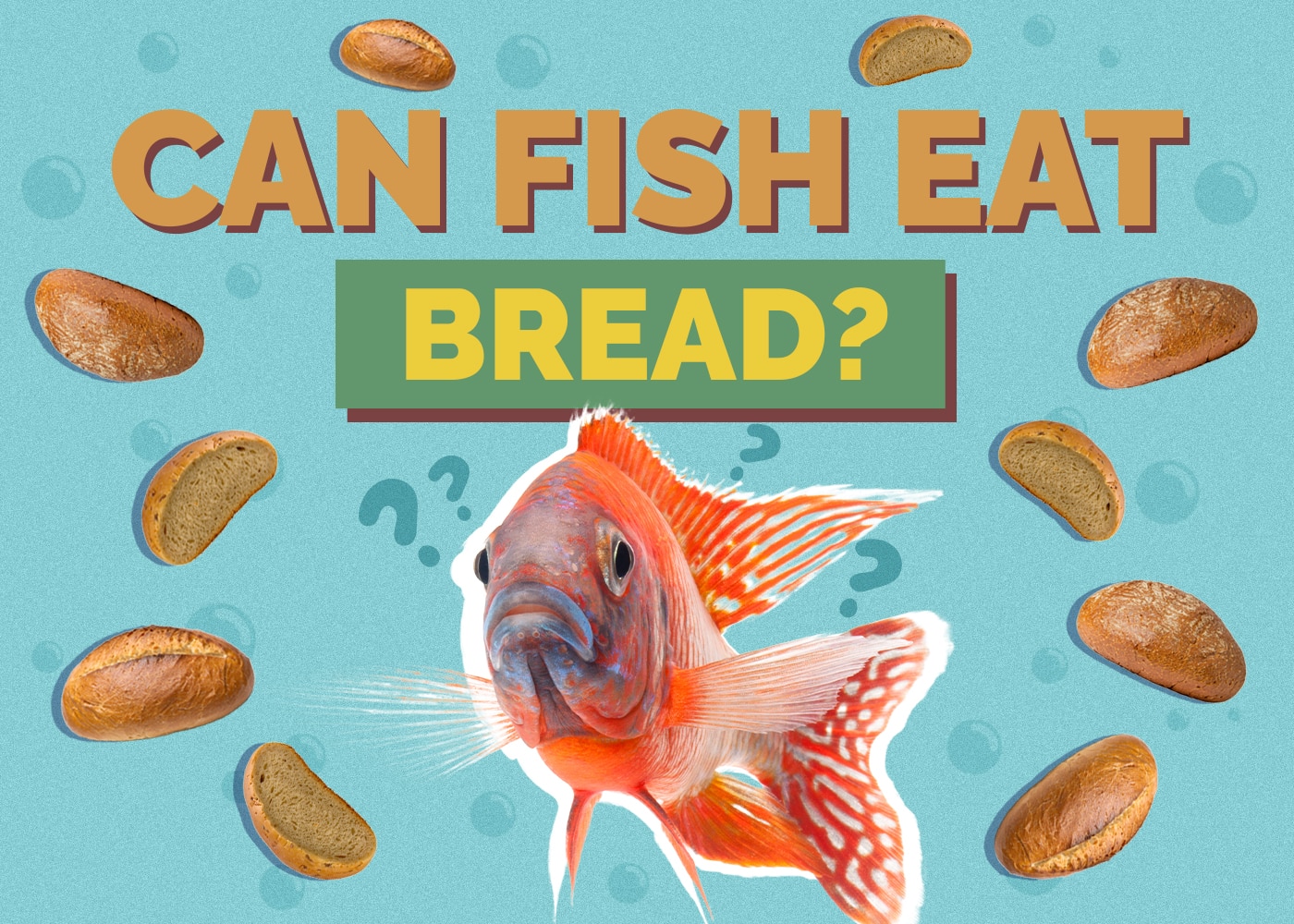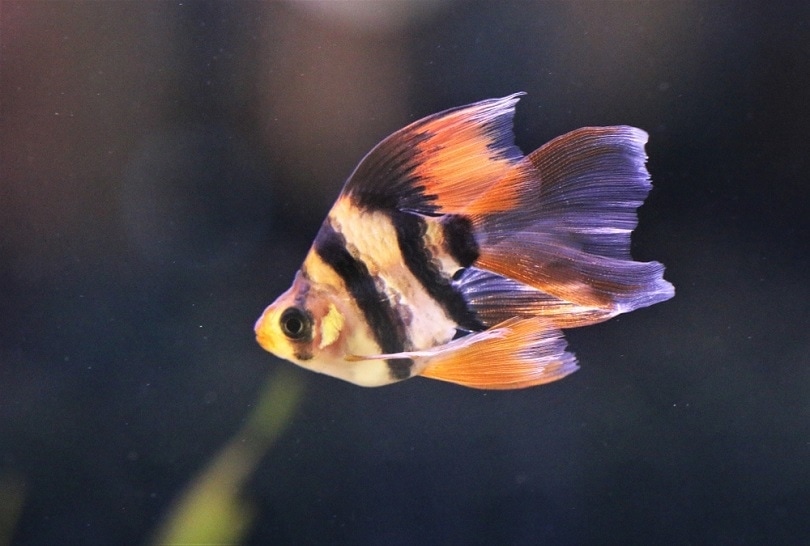8 Best Aquarium Fish for Planted Tanks (with Pictures)

Updated on
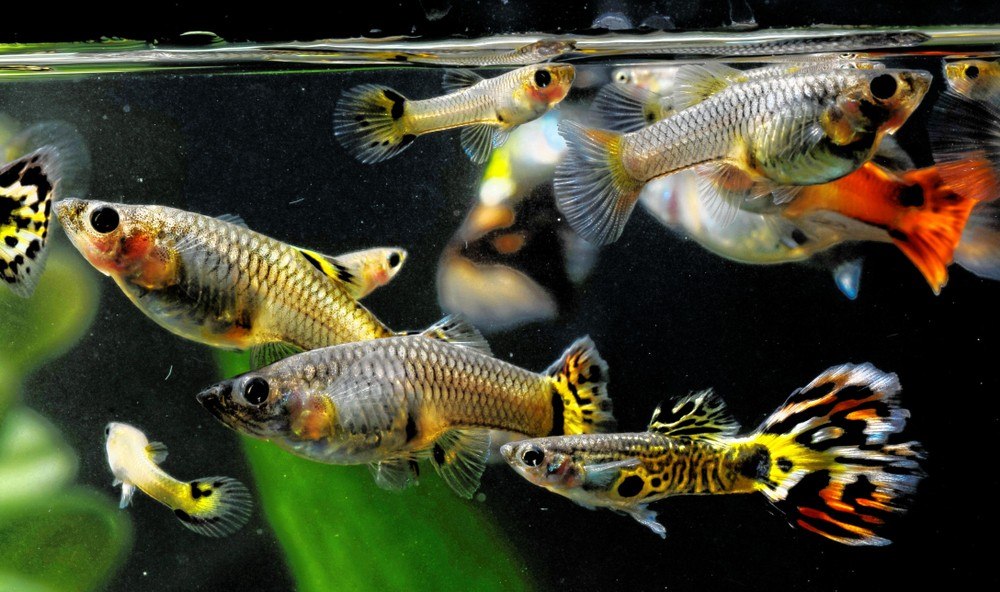
Due to the ease of finding live plants for an aquarium, many people are growing plants in freshwater tanks. While it takes a bit of effort to maintain these aquatic plants, creating an aquascape is loads of fun. If you want to set up an aquascape of your own and wish to add some freshwater fish to the mix, it can be challenging to know what species of fish best complement planted tanks.
Selecting fish for a planted tank isn’t always as straightforward as visiting your local fish store to pick out whatever catches your eye. Here are a few factors to keep in mind when choosing fish for your planted tank.
The Fish Should Be Small or Medium in Size
Fish that are small or medium in size are best for planted tanks because they won’t interfere with the aesthetics of your tank as they swim around nor will they damage your plants. On the other hand, if you were to put larger fish in a tank with live plants, the fish would use up lots of carbon dioxide and nitrogenous fertilizer which could harm or even kill your plants. To get the most hassle-free enjoyment from your aquascape setup, stick with small and medium-sized fish.
If you’re dead-set on getting a couple of larger fish species, be sure you choose hearty plants that can stand up to the bigger fish. And of course, you’ll need a large tank to accommodate bigger fish. The actual size of the tank you’ll need depends on what type of fish you get, how big they grow, their territorial requirements, etc. We’ve included a large fish species on this list because it’s popular among people with large planted tanks and it’s a fascinating species too!
The Fish Must Be Plant-Safe
Some species of goldfish, catfish, and cichlids can do some real damage to your plants like uproot them and nibble on the leaves. That’s why you should choose mainly carnivorous fish that won’t harm or even destroy the living plants inside your tank.
Here’s our list of the best fish species to put in planted tanks.
The 8 Best Aquarium Fish for Planted Tanks
1. Neon Tetras
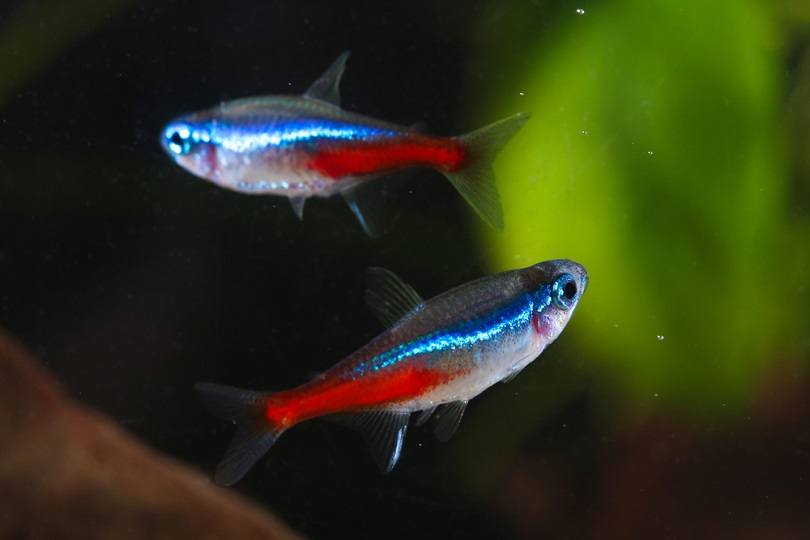
Neon Tetras are the ideal fish for a planted tank because they are tiny schooling fish that don’t eat plants. These little beauties are also brightly colored to stand out nicely on the green, deep red, and brownish backdrop of live aquatic plants.
Native to South America and Africa, Neon Tetras like a 75°F–80°F water temperature and a 6.5–7.0 pH level. The nice thing about Neon Tetras is that they’re cheap to buy and fish that are somewhat flexible as they can survive in non-optimal water conditions. Neon Tetras grow to lengths of about 2 inches and are very easy fish to care for, making them a big winner in our book.
Neon Tetras are easy and cheap fish to feed as they’ll readily feed on ordinary fish flakes, bloodworms, daphnia, small fish food pellets, and brine shrimp.
2. Chili Rasboras
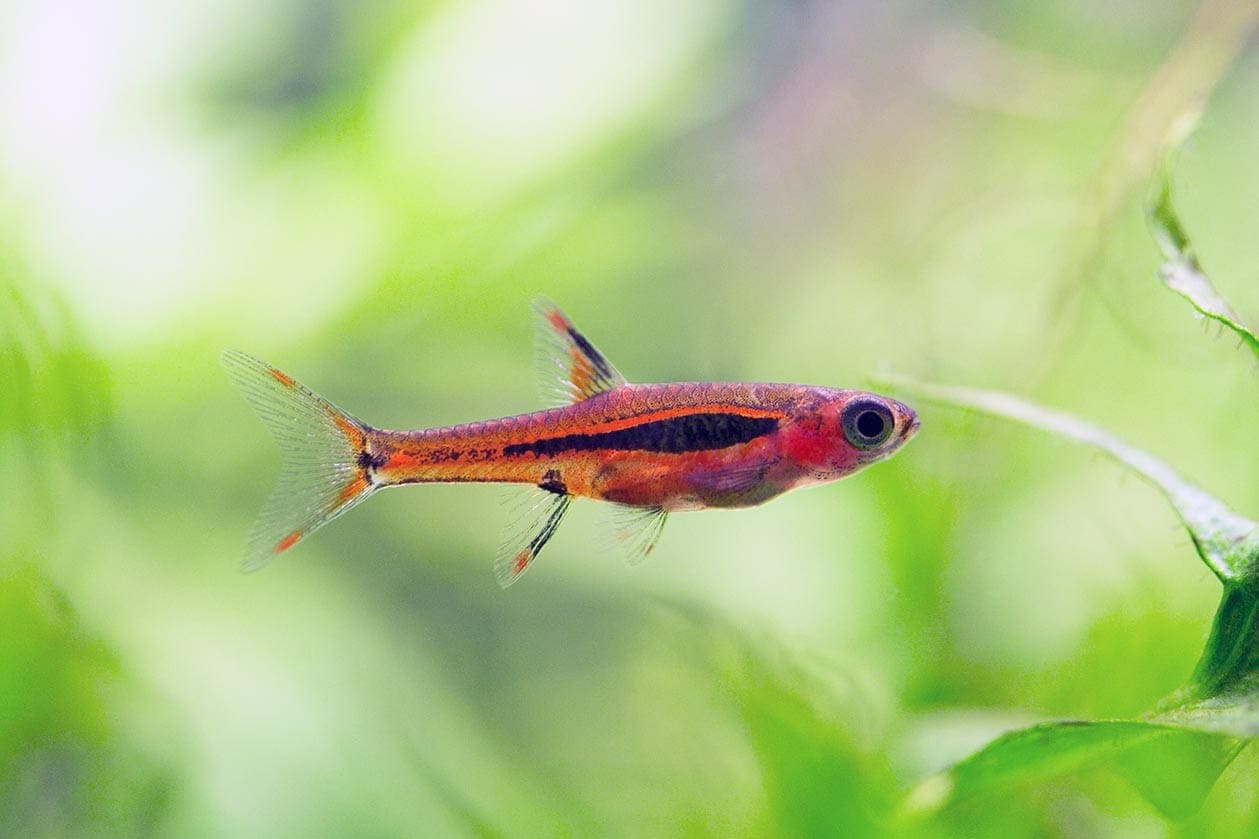
Native to Indonesia, Chili Rasboras, or Chilis as they’re also called, are tiny schooling fish that are under an inch long. When these little fish are put into a planted tank with full-spectrum light, dark substrate, and lots of cover, they’re absolutely gorgeous with their rich red and purplish hues.
The ruby-red males of the species are especially beautiful when they’re vying for the attention of their female counterparts.
Chili Rasboras prefer a 68°F–82°F water temperature with a 4.0–5.0 pH level. Thes fish do best in larger schools of 20 or more fish but you can keep as few as six Chilis without any issues. These lively little fish are inexpensive to buy and they never fail to entertain with their constant movement and bright coloring. Chilis feed on seed shrimp, daphnia, insect larvae, small worms, and other free-swimming creatures so they won’t eat your plants.
3. Guppies
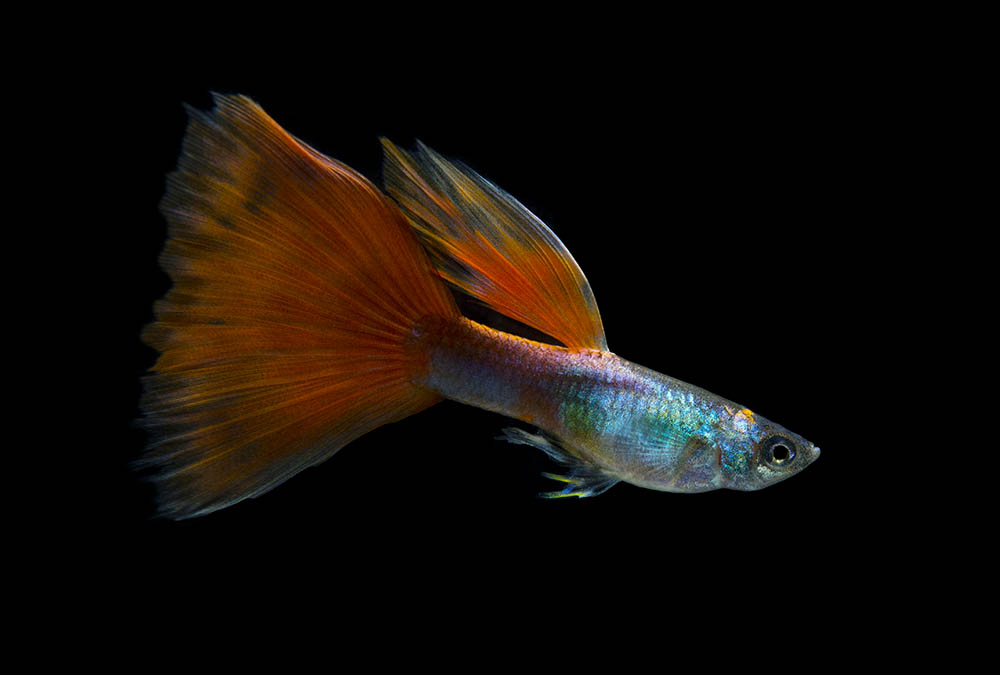
Guppies have been the mainstay of home aquariums around the world for a very long time, and for good reason! These are hardy and colorful schooling fish that are easy to care for. The males sport a brightly colored tail they use to attract the females of the species and boy do they put on a show!
Guppies are multi-colored beauties native to South America that grow to be 3 inches in length with the females being longer than the males. Thanks to selective breeding, you can find a variety of guppy strains for sale that have all kinds of color variations, patterns, and sizes of fins. Guppies do best in water that’s between 74°F–82°F with a 7.0–8.0 pH level.
Because Guppies are susceptible to other species that nip their fins, they should live alone in a planted tank. These little fish don’t school in a tank due to predators in nature where they thrive in warm ponds and other small bodies of water. Guppies are voracious eaters that will feed on fish flakes, shrimp, bloodworms, and algae.
4. Rainbows
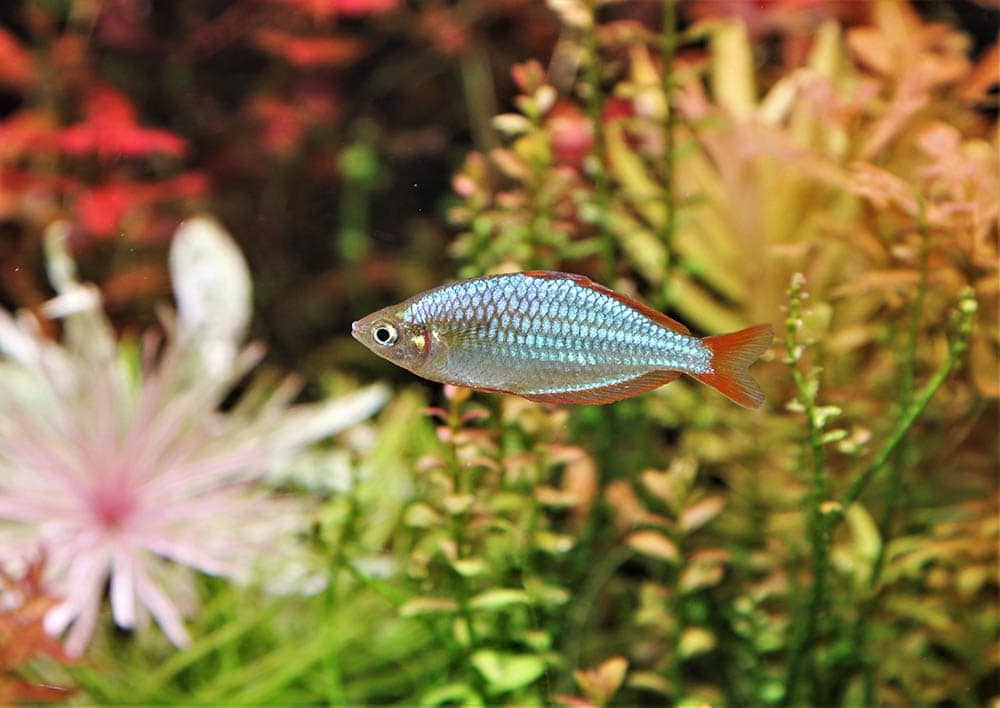
Aquascaping enthusiasts enjoy keeping small Rainbows in their tanks due to their bright reflective coloration. The scales of these freshwater fish are mirrored so the fish add a lot of movement to an otherwise static aquascape. Rainbows thrive in 72°F–82°F water temperatures with a 6.5–7.5 pH level.
The most popular small Rainbows suitable for planted tanks include the Dwarf Neon Rainbowfish, the Threadfin, and the Spotted Blue Eye. They’re easy fish to find and come at a good price point which is always a plus!
5. Angelfish
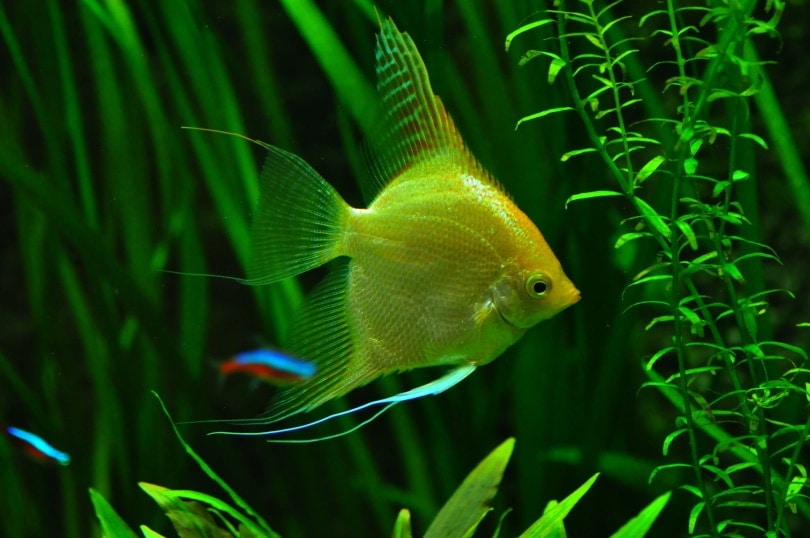
The beautiful Angelfish never fails to amaze with its graceful beauty. If you’re a fan of Angelfish and want to add a couple to your planted tank, be aware that these fish are a challenging species that requires regular feeding and careful monitoring.
Because freshwater Angelfish can grow quite large, it’s best to keep this species in a large planted tank. While Angelfish are hardy and can tolerate a wide range of water parameters, their preference is soft, slightly acidic water with a 6.5–7.2 pH level. These fish do best in the 78°F to 84°F water temperature range.
Since Angelfish feed on plants like duckweed and algae, they can nibble on the plants you put in your tank, so keep that in mind when selecting your plants. Choose smaller plants so your Angelfish can swim freely. Some good choices that will provide Angelfish with some cover include Java Fern, Vallisneria, and Anubias Nana.
Known for their semi-aggressive nature, Angelfish can’t be kept with other aggressive fish like Oscars or other cichlids unless they are very small. The best fish to keep with Angelfish are peaceful non-aggressive species like bottom-feeding catfish. Angelfish can also live peacefully with some Neon Tetras.
6. Corydoras Catfish
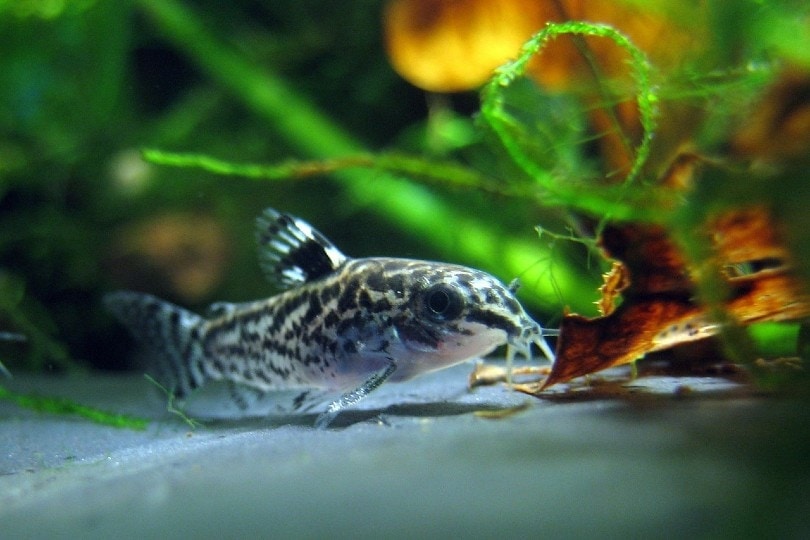
The Corydoras Catfish, which is also known as the Armored Catfish, is very active during the day swimming about and motionless at night. This passive bottom-feeder works well in planted tanks and prefers eating common fish flakes and pellets. The Corydoras Catfish thrives in 78°F–84°F water temperatures and needs a pH level of 7.0–8.0.
Native to South America, Corydoras Catfish eat small crustaceans, insects, and larvae as well as vegetative debris. These fish are easy to find in aquarium stores and they’re affordable too as you can easily pick one up for just a few dollars. This is a small fish that averages about 2.5 inches in length. These hardy fish can live with most community tank fish as long as they’re non-aggressive and peaceful.
7. Discus
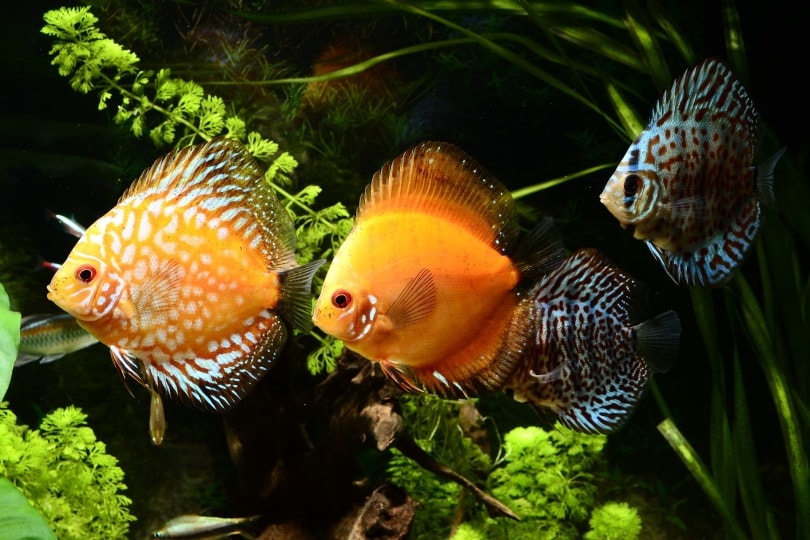
Like many other freshwater fish native to South America, Discus are schooling fish that prefer living in small groups. These fish prefer 82°F–86°F water temperatures with a pH level of 6.0–7.0. Since these fish prefer higher temperatures, it’s important that the plants in your tank can thrive in very warm water.
Discus are mostly calm and peaceful fish but as cichlids, they can be aggressive toward other aggressive fish so they should be kept with non-confrontational fish.
These fish have a distinctive disc shape with bright colors and patterns, making them a popular pick for planted tanks. Often called the “King of the Aquarium”, Discus can grow quite large and require tanks of 75 gallons or larger when fully grown. A big tall tank is best for accommodating this fish’s body shape. A Discus aquascape should include some floating plants, large broadleaf plants, and sinkable driftwood that simulates downed branches and trees.
Discus forage along the bottom of a tank searching for worms and small crustaceans. These fish will also eat tropical fish flakes and shrimp pellets, making them easy to keep.
8. Black Ghost Knife
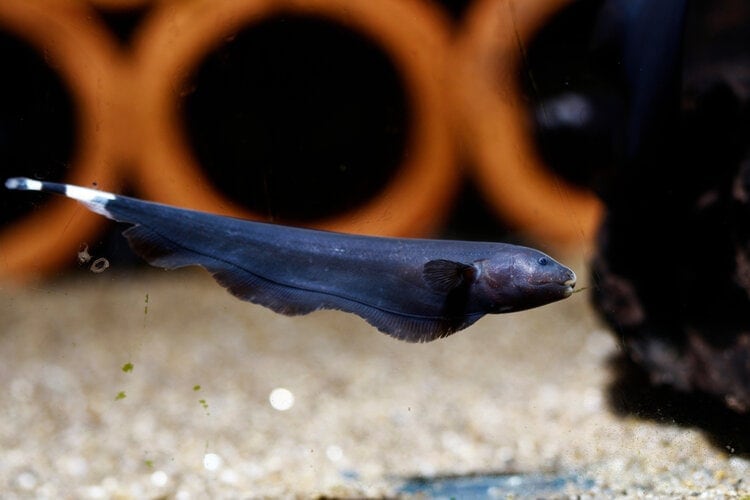
The Black Ghost Knife or just Black Knife as it’s also called is another fish native to South America. This is a nocturnal fish that’s most active during the night and resting during the day.
The Black Ghost Knife is shy and non-social but it can be an aggressive fish if kept with other Black Knives. This eye-catching fish can live peacefully with most non-aggressive aquarium fish as it will simply ignore them.
As the name suggests, a Black Knife is a knife-shaped fish that is all black except for two white rings on the tail and a white stripe extending from the nose along the back. A Black Knife looks stunning in a tank full of aquatic plants. These shy fish need places to hide like smooth rocks, caves, and tall plants. Since the Black Knife doesn’t have scales, the substrate you use should be sand or fine gravel so the fish doesn’t get injured.
The Black Ghost Knife is best kept in 73°F–82°F water temperatures with a pH level of 6.0–8.0. This fish can be 18–20 inches fully grown so it needs a large tank of at least 100 gallons. As a bottom feeder, The Black Knife spends its time at night foraging for food. You can feed these fish live or frozen bloodworms and brine shrimp but not fish flakes or pellets as they will reject flakes and pellets.
Final Thoughts
Setting up a planted tank is lots of fun and quite a bit of work. The aquascape you create will be pretty to look at and it will benefit the fish you add to it. Live plants provide the fish with oxygen and help rid the water of harmful carbon dioxide and ammonia. The gently swaying greenery also provides the fish with cover while offering you a sense of calm serenity when viewing it.
All the fish species mentioned above are sure to add some color and movement to your aquascape to make it a beautiful and lively addition to your home.
Featured Image Credit: underworld, Shutterstock



